How To Get Rid Of Milia At Home & Prevention Tips
Learn about the ingredients you can use to effectively deal with these tiny bumps.
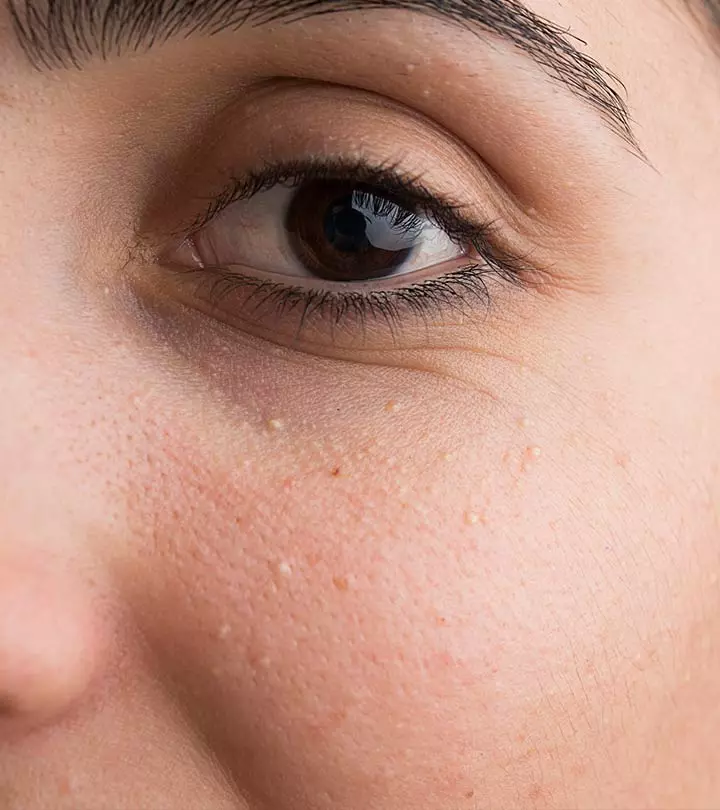
Image: iStock
Milia appears as tiny white or yellowish-white papulesi Pimple-like bumps on the skin without pus mainly found in men caused due to razor cuts, goosebumps, or insect bite. on the cheeks, nose or other parts of the skin although commonly seen in infants, milia can develop in teenagers and adults as well. Mostly attributed to the buildup of oil in your skin, milia can also be a sign of an underlying medical condition. The good news is there are several treatment options you can try to get rid of milia and prevent them from developing further. To know more, scroll down to read the article.
In This Article
What Is A Milium Cyst?
A milium cyst is a small white or yellow bump that appears on the nose and cheeks. When these cysts occur in groups, they are called milia. Milia are often found on the face, around your eyes, eyelids, lips, and cheeks. However, they may sometimes also occur on other body parts, such as the torso or genitalia. Milia develop when tiny skin flakes become trapped in small pockets near the surface of the skin.
The causes of milia differ among adults and infants and are as follows.
Key Takeaways
- Milia are small white skin growths that typically cluster around the chin, cheeks, and nose.
- They can be caused by certain skin conditions, allergic responses, burns, or prolonged sun exposure.
- They are diagnosed by a skin examination or, in some rare cases, a skin lesion biopsy.
- Dermatologists get rid of these lesions with an extraction process. But coconut oil, lemon juice, steam, or rose water are a few natural remedies that could be helpful.
What Causes Milia?
The cause of milia in a newborn is unknown. It is often mistaken for baby acne, which is triggered by hormones from the mother or an epidermal cyst. However, milia do not cause inflammation or swelling like acne, and most of the time, infants are born with it.
In adults as well as older children, milia occur as a result of damage to your skin. This can include (1):
- Blistering due to skin conditions like epidermolysis bullosai A group of rare genetic skin disorders that causes the skin to become weak and blistered, either on or inside the body, due to injuries caused by scratching or the heat. (EB), cicatricial pemphigoidi A rare chronic autoimmune blistering disorder that causes scarring and affects either the skin or mucous membranes or both. , or porphyria cutanea tarda (PCT)
- Blistering due to allergic reactions, such as a poison ivy allergy
- Burns
- Long-term exposure to the sun
- Long-term use of steroid creams
- Skin-resurfacing procedures like dermabrasioni A kind of surgical procedure of skin that removes the outer skin layer to allow smooth skin to regrow. and laser resurfacing
- Aging skin
Milia can be classified into different types, depending on the age at which the cysts occur and the cause.
What Are The Types Of Milia?
Milia are classified into primary and secondary categories (1). While primary milia are formed because of entrapped keratin and are found on the faces of infants and adults, secondary milia are formed when the ducts leading to the skin’s surface get clogged.
Milia are further divided into the following types:
- Neonatal Milia: These are primary milia. They occur in newborns and clear up within a few weeks.
- Juvenile Milia: Some rare genetic disorders can cause juvenile milia. They are:
- Gardner’s syndrome, which may lead to colon cancer later on
- Nevoid basal cell carcinoma syndrome (NBCCS)
- Bazex-Dupré-Christol syndrome affects hair growth and the ability to sweat
- Pachyonychia congenita, a condition that causes thick or abnormally shaped nails
- Milia En Plaque: This type affects the eyelids, ears, cheeks, and jaw. It is often associated with genetic or autoimmune disorders like discoid lupusi A chronic autoimmune disease causing a severe rash on the skin accompanied by inflammation and scarring. or lichen planusi An inflammatory skin condition causing swelling and irritation in mucous membranes, skin, nails and hair. .
- Multiple Eruptive Milia: These cause itching and most often occur on the face, upper arms, and torso.
- Traumatic Milia: The milia cysts occur as a result of skin injuries. The resultant cysts may be red along the rim and white in the center.
- Milia is associated with drugs and other products
Milia can also be caused by exposure to certain drugs and makeup products like:
- Liquid paraffin or petroleum
- Paraffin oil
- Paraffinum liquidumi Also known as liquid paraffin, it is a clear, liquid mineral oil used in medicines and cosmetics for its moisture-retaining property.
- Petrolatumi A thick, greasy substance made from petroleum and used as a moisturizing agent on dry skin and to heal burns and scrapes. liquid
- Petroleum oil
- Lanolini A waxy substance extracted from wool-bearing animals used as a moisturizing agent for the prevention or treatment of dry and rough skin.
Milia hint at skin damage but how much of a threat are they? Let’s find out in the section below.
Are Milia Dangerous?
Milia are typically benign cysts in the epidermis. They are common in newborns but temporary and usually resolve by themselves without requiring any treatment. However, they may also appear in adults and can be persistent, which can have a similar psychosocial impact as acne lesions (2).
However, secondary milia may be a cause for concern as they often follow burns, rashes, or blisters. They are generally associated with other skin conditions such as epidermolysis bullosa and similar blistering skin diseases, hinting at skin trauma, side effects from medication, or other underlying conditions (3).
Therefore, it is important to get milia checked by a dermatologist if it seems persistent. Keep reading to learn about its diagnosis and treatments.
How Are Milia Diagnosed?
Milia are usually diagnosed by a physical examination that analyzes the appearance of your cysts. In some rare cases, a skin lesion biopsy may be required to rule out other possibilities.
Milia can hinder your confidence and also put you at the risk of developing scars. Dermatologists manage these lesions by doing extraction. And here are some natural remedies that are effective for milia removal at home.
How To Get Rid Of Milia At Home
- Apple Cider Vinegar
- Castor Oil
- Tea Tree Oil
- Vitamin A
- Coconut Oil
- Sugar Scrub
- Lemon Juice
- Toothpaste
- Honey Mask
- Rose Water
- Steam
Home Remedies To Treat Milia
Here are a few remedies that may help manage milia. However, note that even natural ingredients like coconut oil and honey may cause allergic reactions in some people. You can avoid this by performing a patch test before applying any of the remedies on wider skin areas.
1. Apple Cider Vinegar
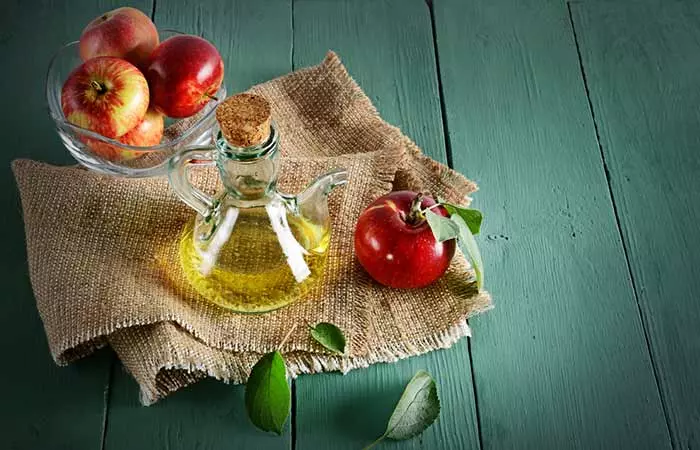
You Will Need
- 1 tablespoon of apple cider vinegar
- 1 tablespoon of water
- Cotton balls
What You Have To Do
- Add a tablespoon of apple cider vinegar to a tablespoon of water.
- Mix well and dip a cotton ball in it.
- Apply all over the affected area and wash off after 30 minutes.
How Often You Should Do This
You must do this daily for a few weeks.
Why This Works
Apple cider vinegar is astringent and can help in reducing the size of the skin pores.
This forces the debris out of your pores and helps you with milia removal. However, there is limited scientific evidence to support this claim.
Note: Apple cider vinegar is acidic and may lead to skin irritation. Always dilute it before use. Also, perform a patch test before applying it widely to prevent allergic reactions.
2. Castor Oil
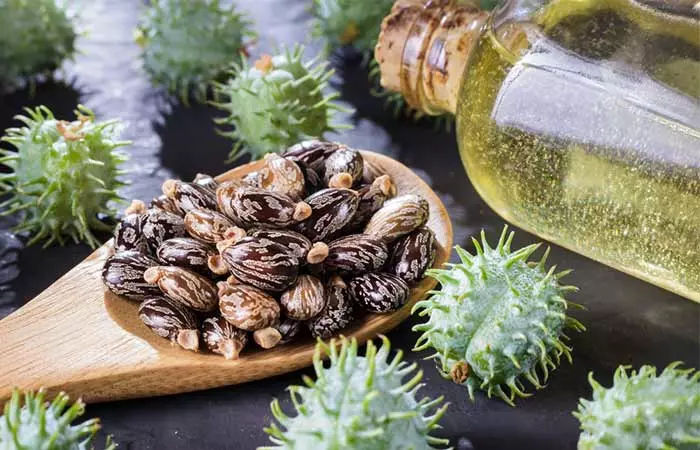
You Will Need
½ teaspoon of cold-pressed castor oil
What You Have To Do
- Clean the affected area with a mild cleanser.
- Take half a teaspoon of cold-pressed castor oil and apply it to the milia.
- Leave it on for 30 to 60 minutes before rinsing off with water.
How Often You Should Do This
Do this once daily.
Why This Works
Castor oil has emollienti The tendency of substances or ingredients used in skin care products that soften and hydrate the skin by trapping moisture in the skin. and anti-inflammatory properties, which may help combat milia (4).
3. Tea Tree Oil
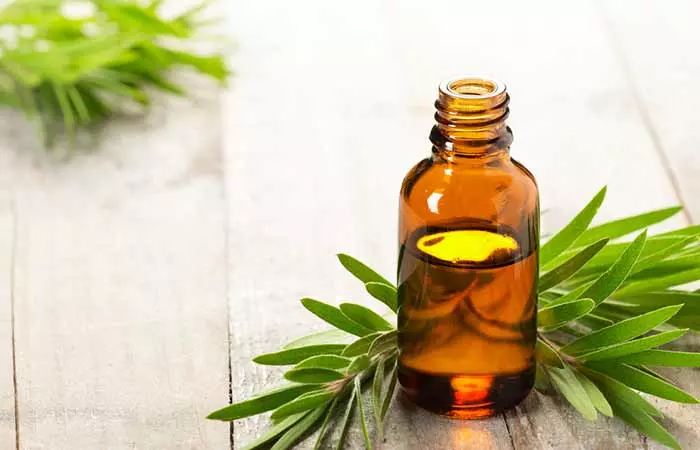
You Will Need
- 6 drops of tea tree oil
- 6 drops of coconut oil
What You Have To Do
- Mix six drops each of tea tree and coconut oil.
- Apply the mixture to the cleansed and affected areas.
- Allow it to work for about 30 minutes before washing it off.
How Often You Should Do This
Do this 1 to 2 times daily for faster results.
Why This Works
Tea tree oil helps in drying the milia lesions faster, thereby speeding up the healing process. This essential oil also has antiseptic and anti-inflammatory properties that help prevent further infection in the affected area ( 5).
4. Vitamin A

You Will Need
700-900 mcg vitamin A
What You Have To Do
- Consume 700 to 900 mcg vitamin A daily.
- You can consume foods like carrots, almonds, and avocados, which are rich in the vitamin.
- You can also take vitamin A supplements after consulting a doctor.
How Often You Should Do This
Do this daily.
Why This Works
Vitamin A can vastly improve your skin’s turnover by helping in its rejuvenation (6). It can also be applied topically in the form of retinol for treating milia (7).
5. Coconut Oil
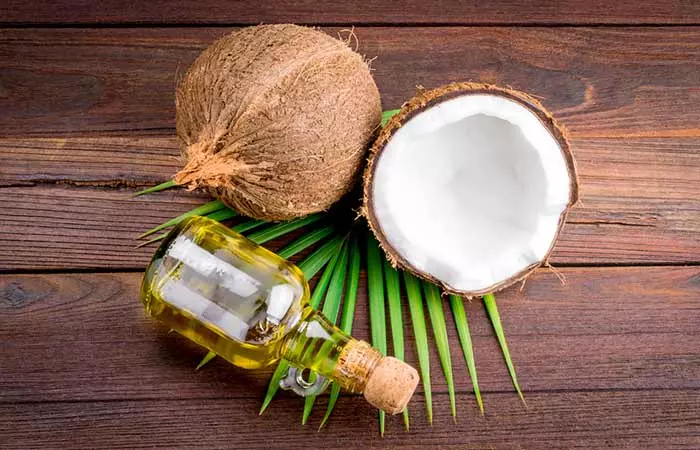
You Will Need
Cold-pressed coconut oil (as required)
What You Have To Do
- Take a little cold-pressed coconut oil in your palms and apply it to the affected skin.
- Leave it on for about 30 to 60 minutes.
- Rinse off with water and a mild cleanser.
How Often You Should Do This
Do this once daily for a week or two.
Why This Works
Given the anti-inflammatory and moisturizing properties of coconut oil, it is no surprise that it works amazingly well in treating milia lesions (8). It keeps your skin moisturized and reduces inflammation in the affected area (9).
6. Sugar Scrub
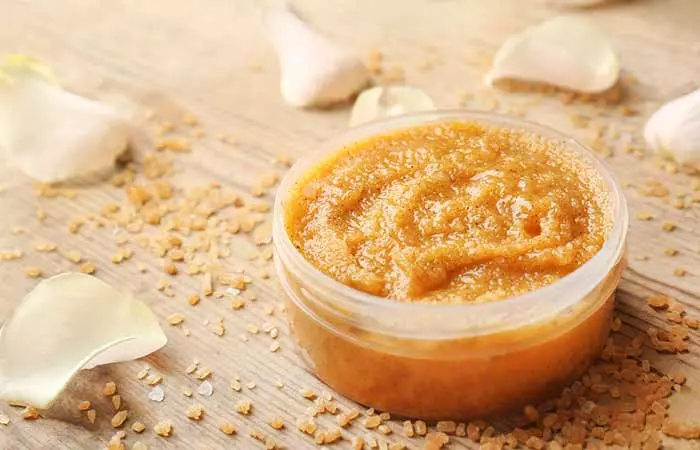
You Will Need
- 2 tablespoons of granulated sugar
- ½ lemon
- 1 teaspoon of coconut oil
What You Have To Do
- Mix two tablespoons of sugar with the juice of half a lemon and a teaspoon of coconut oil.
- Use this mixture to scrub the affected skin gently.
- Leave it on for about 20 minutes and then rinse it off.
How Often You Should Do This
You must do this 3 to 4 times a week.
Why This Works
The sugar scrub helps in exfoliating your skin. And regular exfoliation helps you get rid of the stubborn milia cysts and clear skin blemishes.
Note: Harsh scrubbing can irritate the skin and may worsen milia. Always be gentle while using this remedy. Also, if you have sensitive skin, scrub only 1-2 times per week to prevent over-exfoliation and irritation. If you have skin conditions like rosacea and eczema, it is best to avoid this remedy entirely.
Ysobel, a beauty blogger, found exfoliation to be an easy and effective solution to get rid of milia. On her blog, she writes, “After I noticed these bumps over my eyelids, I began to exfoliate like crazy. Removing the skin on top of the milia surface will help your milia pop right out of your skin (i).”
 Quick Tip
Quick Tip7. Lemon Juice

You Will Need
- ½ lemon
- A pinch of salt (optional)
What You Have To Do
- Cut a lemon into half and rub one half directly on the affected area.
- Alternatively, you can also extract the juice from half a lemon, add a pinch of salt to it, and apply this mixture to the milia-prone areas of your skin.
- Leave it on for 30 to 40 minutes and rinse off.
How Often You Should Do This
Do this once daily.
Why This Works
Lemon juice acts as a natural astringent that helps in pore unclogging, cleansing, and reducing their size (10). This action of lemon juice, combined with its anti-inflammatory properties, can help in drying up milia and clearing them quickly (11).
Note: Lemon juice is acidic and may cause irritation, redness, and even burns. Therefore, always dilute it before use, especially if you have sensitive skin. A patch test is also recommended before use, as some people may experience stinging, itching, or rashes when using lemon juice directly on the skin.
8. Toothpaste
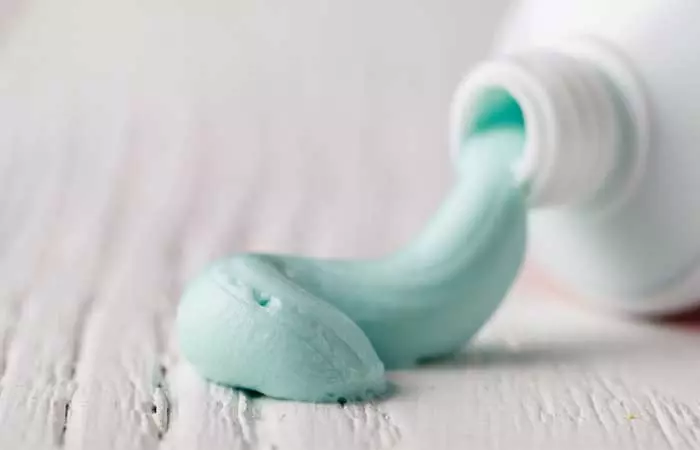
You Will Need
Toothpaste (as required)
What You Have To Do
- Spread an even layer of toothpaste on the affected skin.
- Leave it on overnight.
- Rinse off with cold water.
How Often You Should Do This
You must do this thrice a week.
Why This Works
Toothpaste contains fluoride and sodium bicarbonate. Anecdotal evidence suggests these may help in drying up acne lesions faster with their anti-inflammatory properties. These properties may also help in drying up milia cysts and getting rid of them.
Note: Toothpaste is designed for your teeth and may be too harsh for the skin. Prolonged exposure to it may also irritate, dry out, or even burn the skin. Therefore, it is best to avoid this remedy, especially if you have sensitive skin. You may instead go for gentle alternatives like coconut oil and honey.
9. Honey Mask
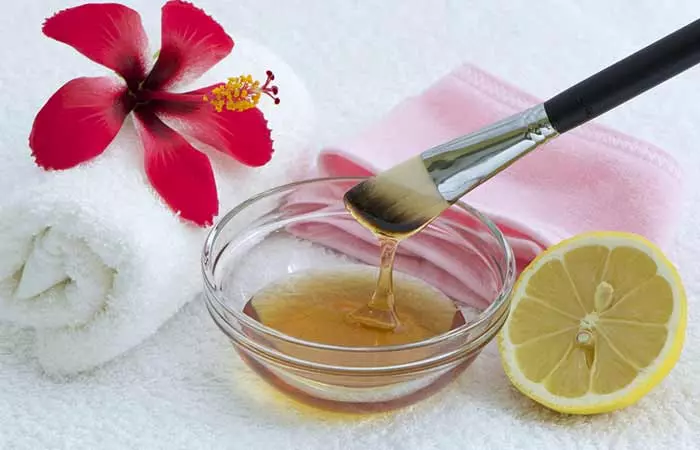
You Will Need
½ tablespoon of manuka honey
What You Have To Do
- Take half a tablespoon of manuka honey on your fingers.
- Apply an even layer to the affected areas.
- Let it work for 20 to 30 minutes before washing it off.
How Often You Should Do This
You must do this once daily for a few weeks.
Why This Works
Manuka honey exhibits anti-inflammatory and antimicrobial activities. This can help in treating the milia lesions and can protect them from further microbial infections (12).
10. Sandalwood And Rose Water
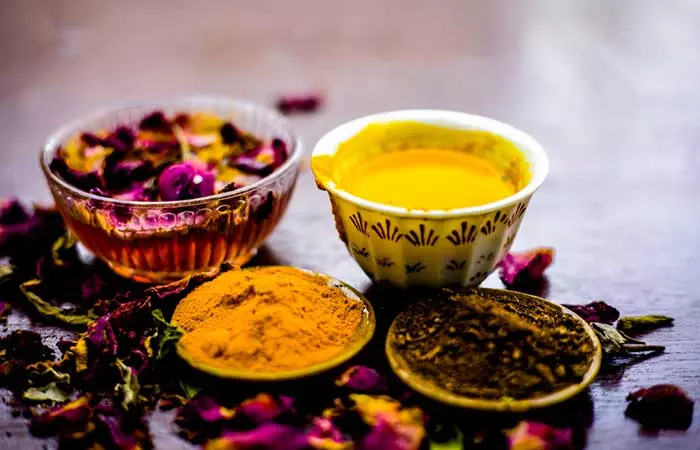
You Will Need
- 1 tablespoon of sandalwood powder
- Rosewater (as required)
What You Have To Do
- To a tablespoon of sandalwood powder, add enough rose water to make a thick paste.
- Apply this mixture evenly to the affected skin.
- Leave it on for around 30 minutes.
- Wash the mixture off your skin with cold water.
How Often You Should Do This
Do this once daily for about 2 weeks to see results.
Why This Works
Sandalwood has exfoliating, cooling, and anti-inflammatory properties (13). When mixed with rose water, it may help remove dead skin cells and prevent clogged pores, thereby preventing milia.
11. Steam
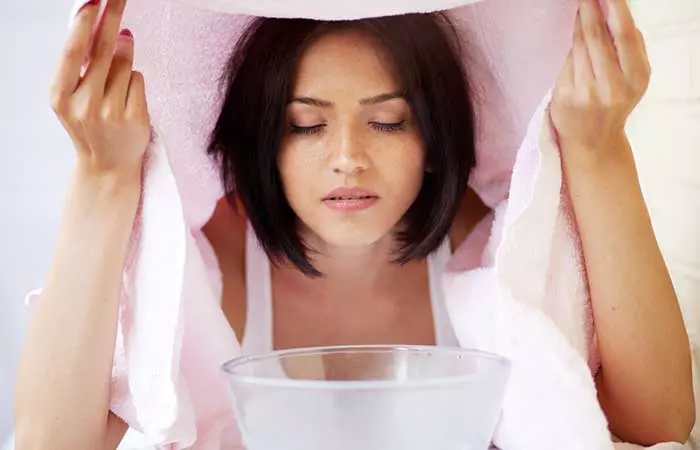
You Will Need
- Hot water
- Towel
What You Have To Do
- Fill some hot water in a large bowl.
- Bend over this bowl and cover your head with a clean towel so that the steam doesn’t escape.
- Allow the steam to work on the affected areas for no more than 5 to 10 minutes.
- You may follow up with a facial scrub.
How Often You Should Do This
Do this once daily.
Why This Works
If you are wondering how to unclog your skin pores, facial steam or facial sauna is the best solution. The heat opens your skin pores and brings out all the dead skin cells and debris to the surface of your skin (14). It may make the removal of milia easier. It also helps with whitehead removal.
Note: Keep your face at least 12 inches away from the steam to prevent redness, irritation, and burns.
 Quick Tip
Quick TipIf home remedies do not help with your milia, you can see a dermatologist for professional treatment. Congenital milia that are present at birth do not need treatment, as they usually disappear on their own. However, other types of milia may not go away naturally. In those cases, a doctor can remove them with a small incision and gentle pressure using a scalpel blade. In some cases, the doctor may also prescribe topical retinoids. They may also use procedures like electrodesiccationi A medical procedure to dry out and destroy skin tissue using high-frequency electric current applied with a needle-like tool. or electrocauteryi A medical procedure that uses the heat from an electric current passed through a special needle to remove unwanted skin tissue. that use an electric current to help get rid of milia (1).
And to prevent it all in the first place, you must also follow some tips. Read about them below.
Prevention Tips
- Avoid excessive exposure to the sun.
- Avoid using thick creams and oil-based products.
- Exfoliate 2 to 3 times a week.
- Clean the affected area daily.
- Steam to open the skin pores.
- Use sunscreen daily.
- Avoid pricking, poking, or trying to remove the milia with your fingers.
- Follow a healthy diet that consists of foods that are best for treating milia, such as fresh fruits, vegetables, whole grains, and vitamin A-rich foods.
- Avoid foods that are sugary, fried, spicy, caffeinated, and salty.
Infographic: 5 Easy Home Remedies To Treat Milia
Facial milia can develop in teenagers and adults and is primarily due to the buildup of oil and often occurs around the eyelids, lips, and cheeks. To get rid of milia, follow the home remedies given in the article and tips to prevent it. Still, some remedies might be challenging to accomplish, so to know about the easiest home remedies to treat milia, check out the infographic given below.

Illustration: StyleCraze Design Team
Certain home remedies work effectively to get rid of milia. The condition is primarily triggered by oil build-up and may also indicate an underlying medical condition. Doing a facial cleansing using apple cider vinegar, tea tree oil, castor oil, lemon juice, toothpaste, coconut oil, honey mask, and rose water can effectively combat milia. Including foods rich in Vitamin A and steam also helps effectively manage milia. In addition to these, you can prevent milia by avoiding thick creams and oil-based products, reducing sun exposure, exfoliating regularly, using sunscreen, and consuming a balanced diet. Milia extraction can also be performed through noninvasive methods such as microdermabrasion, laser treatments or chemical peels.
Frequently Asked Questions
When to see your dermatologist for milia?
Most milia start fading on their own as the surface of the skin starts wearing off. However, in some cases, this doesn’t happen, and they may remain for a long time. In this case, you might have to visit a doctor for milia treatment.
How long do milia last on a baby?
Milia is a common skin condition in newborns, and it can last anywhere from 2 to 3 weeks.
What is the difference between milia and whiteheads?
Whiteheads are closed comedones and a type of acne. They occur when too much sebum, dead skin cells, and debris clog your skin pores. On the other hand, milia occur when there is a keratin buildup and it gets trapped at the base of the follicles, forming tiny and painless bumps.
Can milia be permanent?
Milia in children usually clear up within days or weeks. However, primary milia in adults may persist for months or years. But they eventually go away on their own.
What deficiency causes milia on the face?
Milia may be caused due to lipid deficiency in cells. This results in the formation of crystallized lipids (that show up as milia) instead of smooth lipids. Foods rich in healthy fatty acids may be able to counter this deficiency.
Is Vaseline good for milia?
No, Vaseline is not good for milia as it can clog the pores and exacerbate a milia breakout.
Illustration: How To Get Rid Of Milia At Home & Prevention Tips

Image: Dall·E/StyleCraze Design Team
Bid farewell to milia with safe and scar-free methods you can try at home! Watch this informative video and learn easy techniques to get rid of milia for a smoother complexion.
Personal Experience: Source
StyleCraze's articles are interwoven with authentic personal narratives that provide depth and resonance to our content. Below are the sources of the personal accounts referenced in this article.
i. A-milli-a-milli-a-MILIA?https://ysobeebeauty.blogspot.com/2013/06/a-milli-milli-milia.html
References
Articles on StyleCraze are backed by verified information from peer-reviewed and academic research papers, reputed organizations, research institutions, and medical associations to ensure accuracy and relevance. Read our editorial policy to learn more.
Articles on StyleCraze are backed by verified information from peer-reviewed and academic research papers, reputed organizations, research institutions, and medical associations to ensure accuracy and relevance. Read our editorial policy to learn more.
- Milia
https://www.ncbi.nlm.nih.gov/books/NBK560481/ - A review of diagnosis and treatment of acne in adult female patients
https://www.ncbi.nlm.nih.gov/pmc/articles/PMC5986265/ - Segmental infantile hemangioma with milia: A case report
https://www.ncbi.nlm.nih.gov/pmc/articles/PMC10108420/ - Effect of ricinoleic acid in acute and subchronic experimental models of inflammation.
https://www.ncbi.nlm.nih.gov/pmc/articles/PMC1781768/ - Melaleuca alternifolia (Tea Tree) Oil: a Review of Antimicrobial and Other Medicinal Properties
https://www.ncbi.nlm.nih.gov/pmc/articles/PMC1360273/ - What is vitamin A and why do we need it?
https://www.ncbi.nlm.nih.gov/pmc/articles/PMC3936685/ - Vitamin A in skin and serum–studies of acne vulgaris atopic dermatitis ichthyosis vulgaris and lichen planus
https://pubmed.ncbi.nlm.nih.gov/2933053/ - Anti-inflammatory analgesic and antipyretic activities of virgin coconut oil
https://pubmed.ncbi.nlm.nih.gov/20645831/ - A randomized double-blind controlled trial comparing extra virgin coconut oil with mineral oil as a moisturizer for mild to moderate xerosis
https://pubmed.ncbi.nlm.nih.gov/15724344/ - Citrus limon (Lemon) Phenomenon—A Review of the Chemistry Pharmacological Properties Applications in the Modern Pharmaceutical Food and Cosmetics Industries and Biotechnological Studies
https://pmc.ncbi.nlm.nih.gov/articles/PMC7020168/ - Anti-inflammatory effect of lemon mucilage: in vivo and in vitro studies
https://pubmed.ncbi.nlm.nih.gov/16435583/ - Therapeutic Manuka Honey: No Longer So Alternative
https://www.ncbi.nlm.nih.gov/pmc/articles/PMC4837971/ - Anti-inflammatory analgesic and antioxidant activities of methanolic wood extract of Pterocarpus santalinus L.
https://pmc.ncbi.nlm.nih.gov/articles/PMC3157138/ - Acne: Learn More – Skin care for acne-prone skin
https://www.ncbi.nlm.nih.gov/books/NBK279208/
Read full bio of Dr. CP Thajudheen
Read full bio of Shaheen Naser
Read full bio of Ramona Sinha
Read full bio of Swathi E







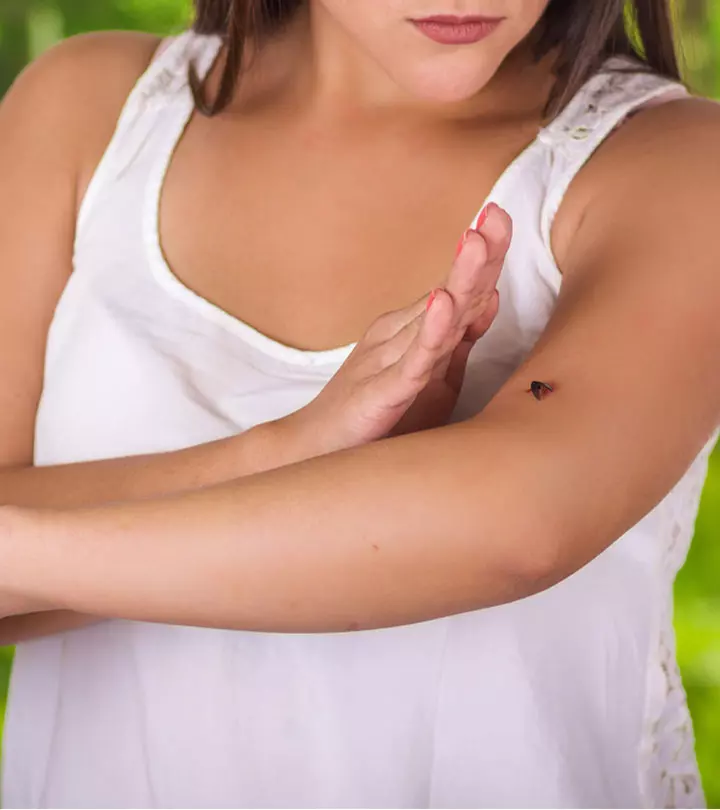
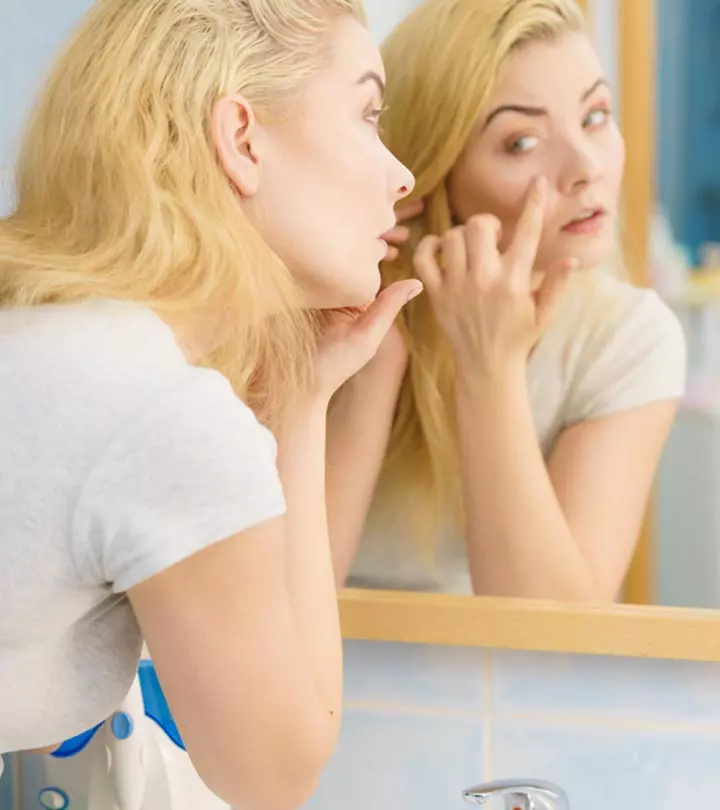


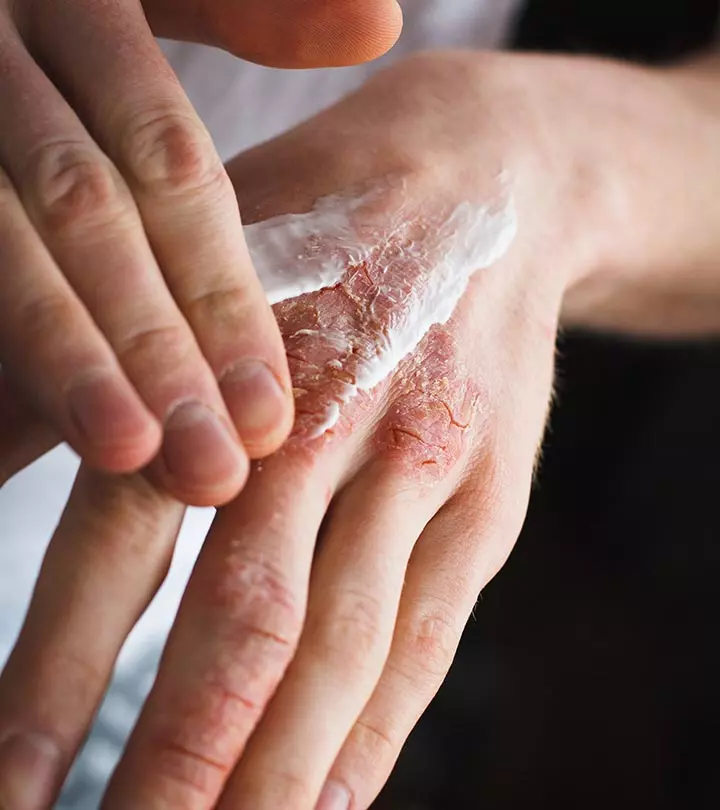
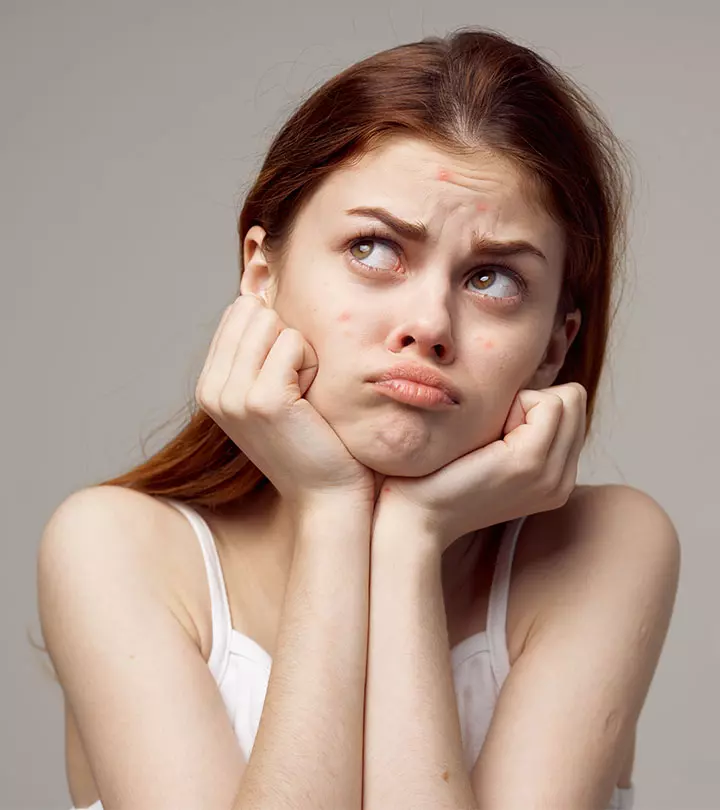
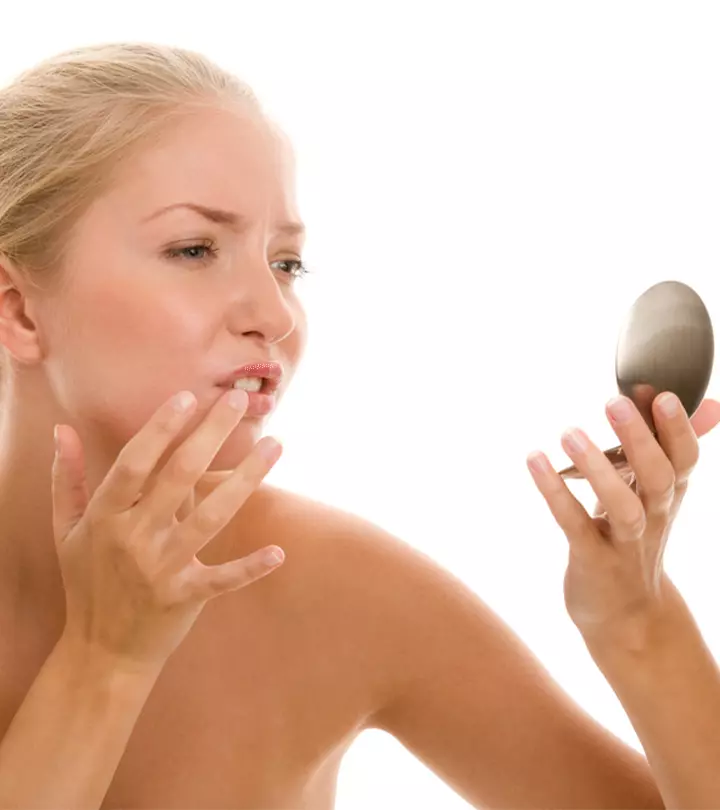
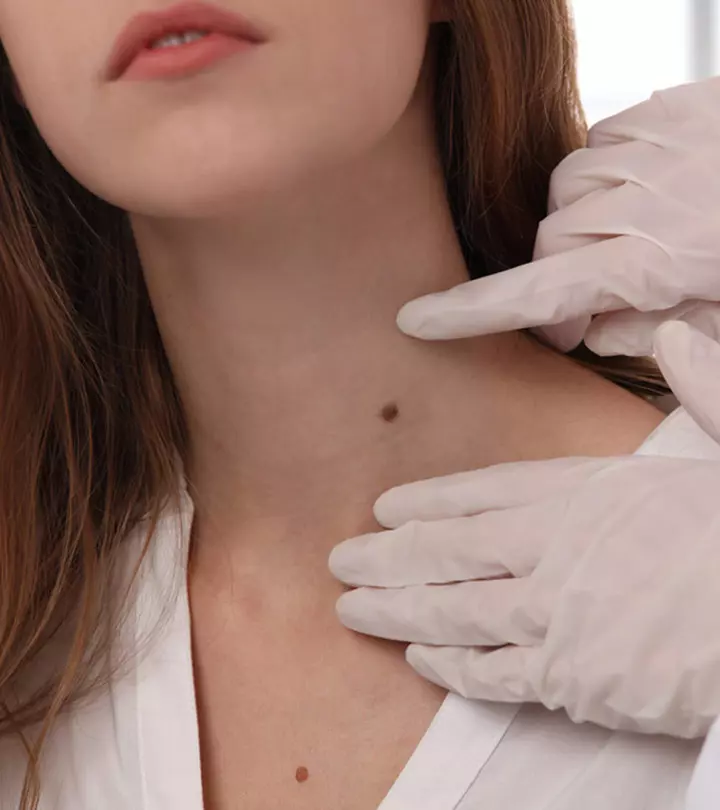
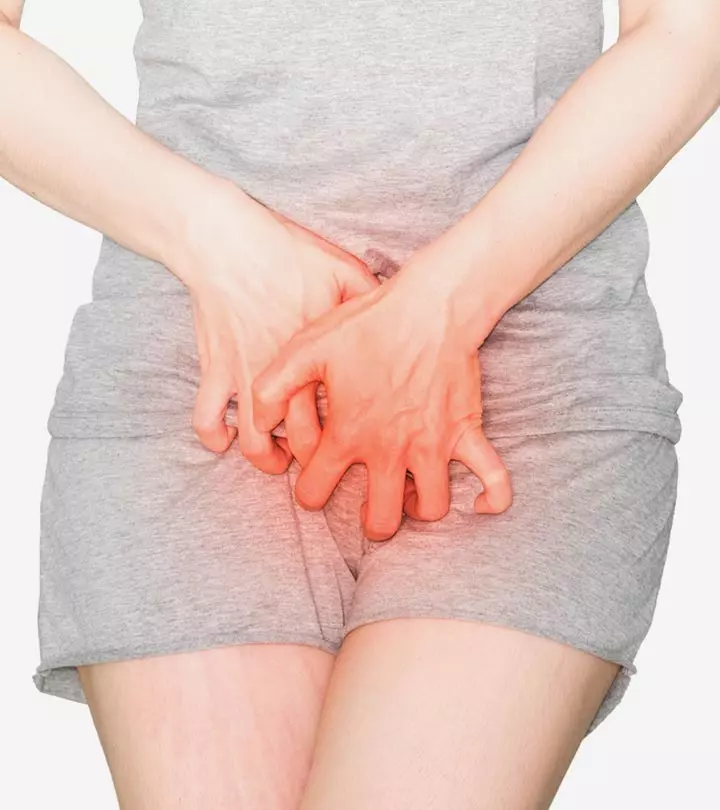


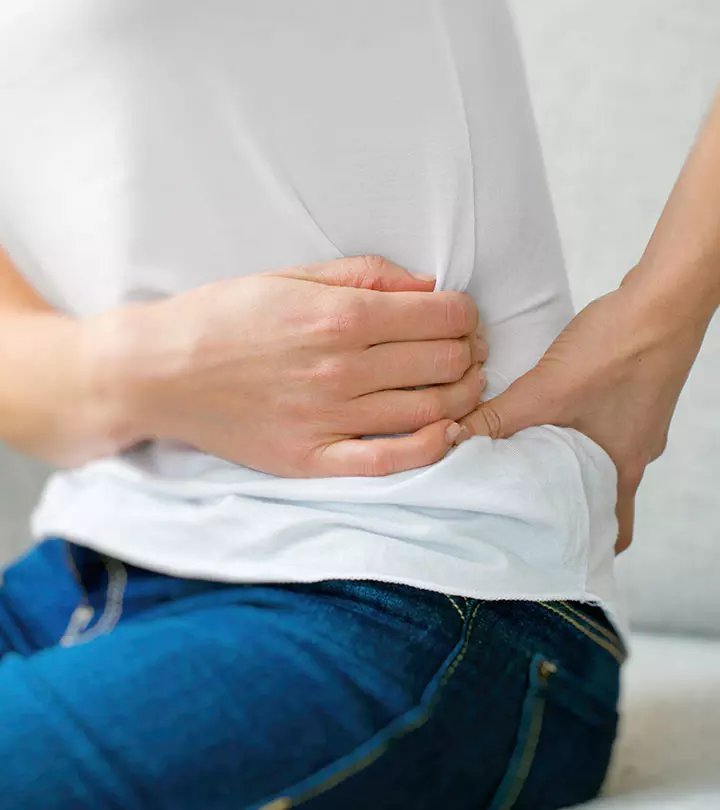
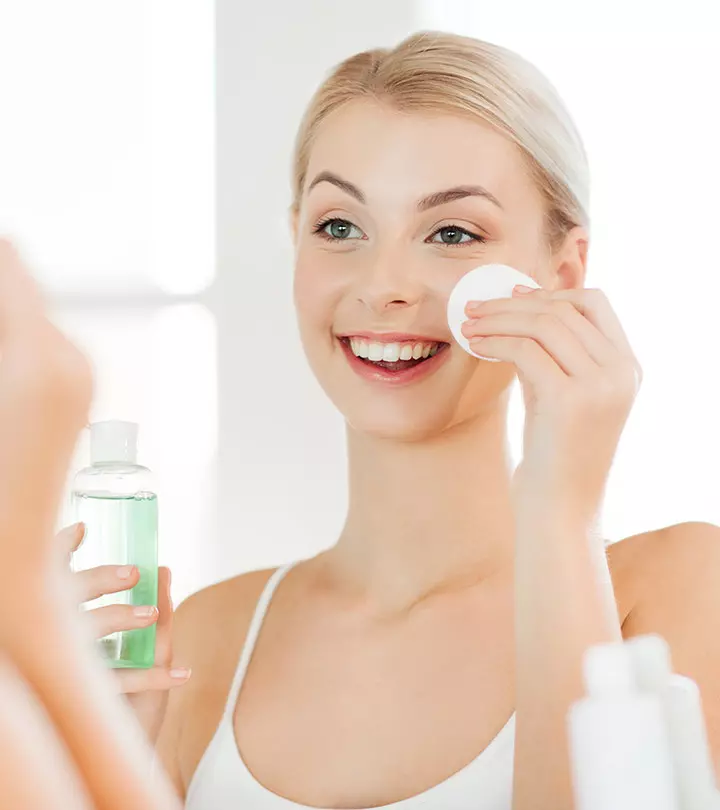

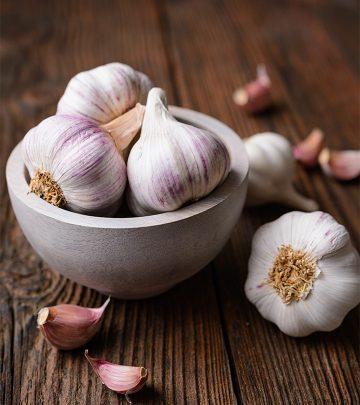
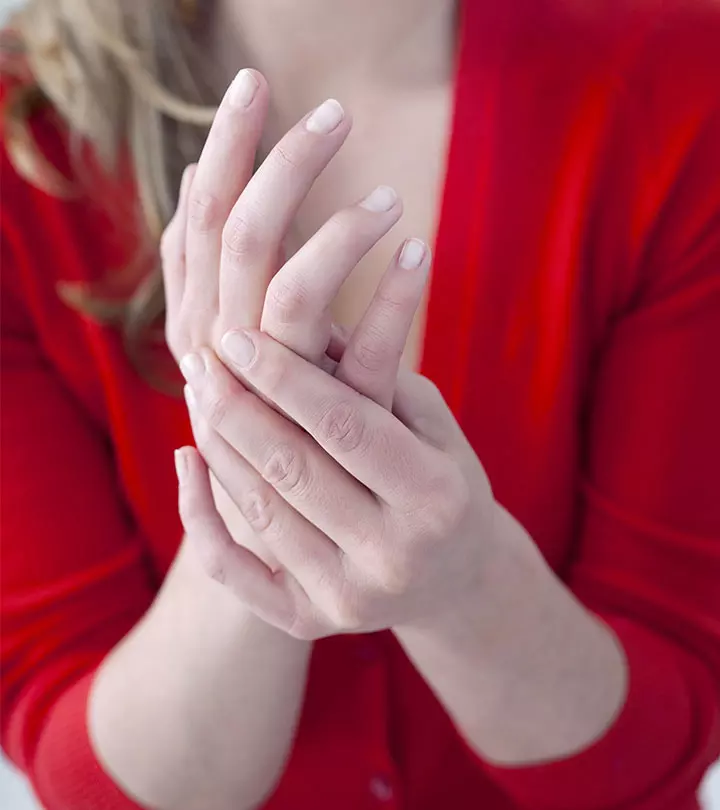



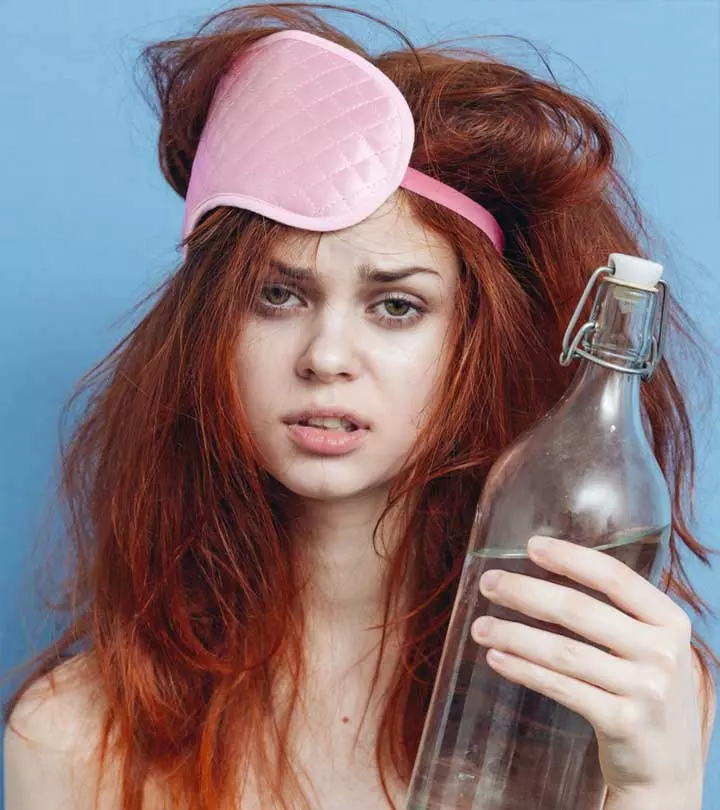
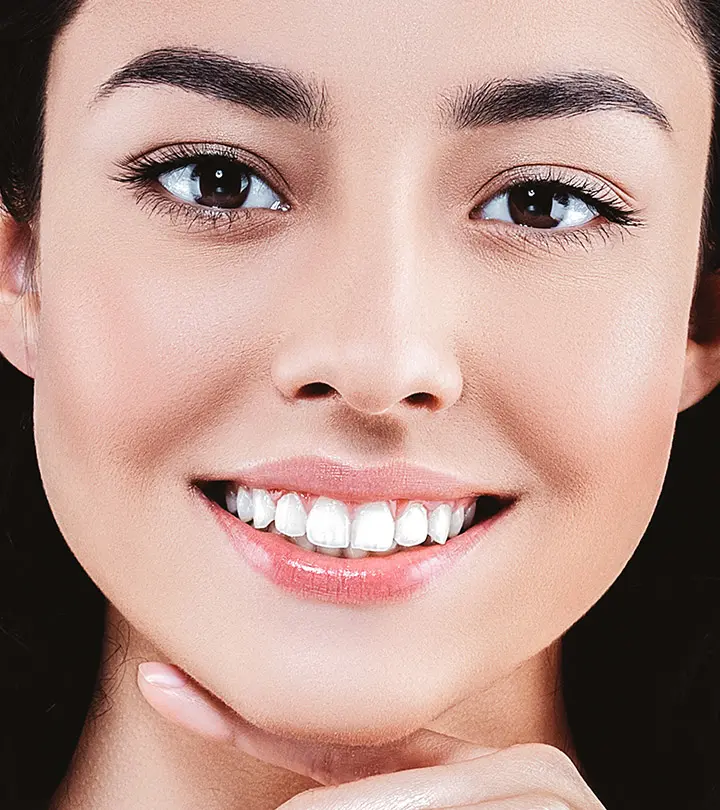
Community Experiences
Join the conversation and become a part of our empowering community! Share your stories, experiences, and insights to connect with other beauty, lifestyle, and health enthusiasts.